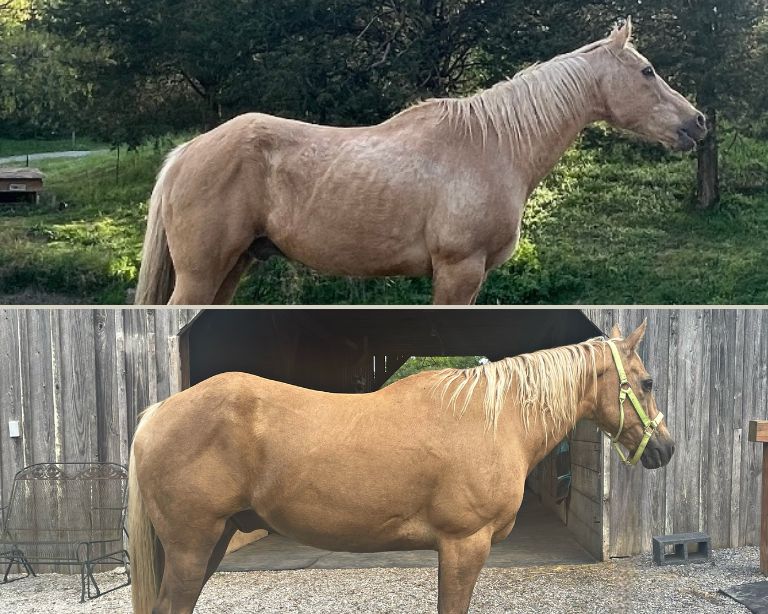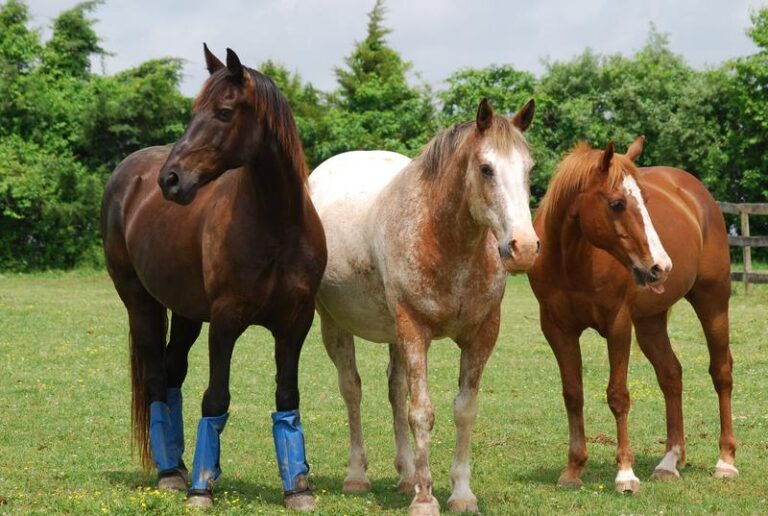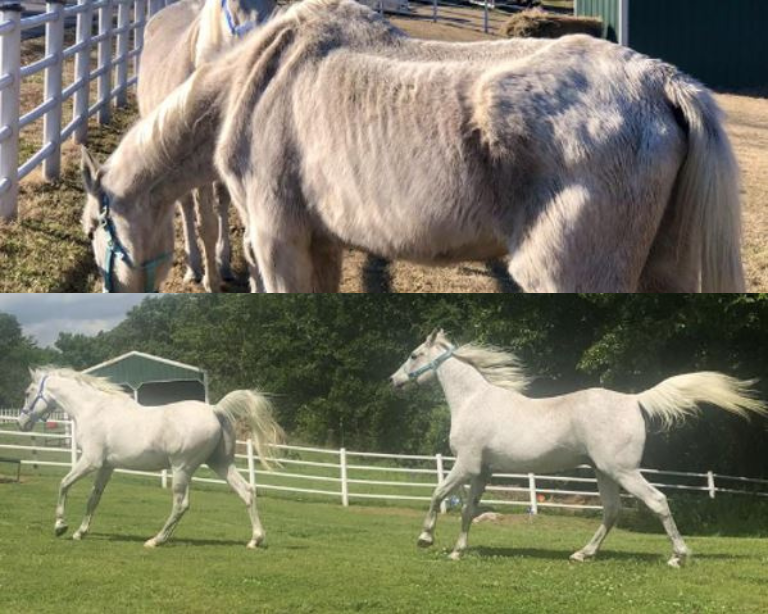
Horse Feed for Underweight/Hard Keepers
What is the best horse feed for hard keepers? Find out what ingredients set Nutrena® horse feed apart from other horse feed brands on the market and why we provide the best nutritional support for underweight horses and hard keepers.
FAQs About Feeding Underweight Horses and Hard Keepers
If you’re feeding an underweight horse, it’s important to read these frequently asked questions about ingredients, diet requirements, and what is guaranteed on your feeding tag. In order to choose the best horse feed for your hard keeper, you have to know what high calorie horse feed provides balanced nutrients and how to compare different products on the market.
-
How do you know if your horse is underweight?
When deciding the ideal diet for your horse, it is important to first consider their Body Condition Score. Body condition scoring in horses is a numerical condition scoring system that provides a consistent measure of the degree of body fat in horses of various breeds and sizes.
Download a copy of the scorecard along with a tracking form here.
- 1 / Poor: Animal extremely emaciated. Spinous processes, ribs, tailhead and hooks and pins projecting prominently. Bone structure of withers, shoulders and neck easily noticeable. No fatty tissues can be felt.
- 2 / Very Thin: Animal emaciated. Slight fat covering over base of spinous processes, transverse processes of lumbar vertebrae feel rounded. Spinous processes, ribs, tailhead and hooks and pins prominent. Withers, shoulders and neck structures faintly discernible.
- 3 / Thin: Fat build-up about halfway on spinous processes, transverse processes cannot be felt. Slight fat cover over ribs. Spinous processes and ribs easily discernible. Tailhead prominent, but individual vertebrae cannot be visually identified. Hook bones appear rounded, but easily discernible. Pin bones not distinguishable. Withers, shoulders and neck accentuated.
- 4 / Moderately Thin: Negative crease along back. Faint outline of ribs discernible. Tailhead prominence depends on conformation, fat can be felt around it. Hook bones not discernible. Withers, shoulders and neck not obviously thin.
- 5 / Moderate: Back level. Ribs cannot be visually distinguished but can be easily felt. Fat around tailhead beginning to feel spongy. Withers appear rounded over spinous processes. Shoulders and neck blend smoothly into body
- 6 / Moderate to Fleshy: May have a slight crease down back. Fat over ribs feels spongy. Fat around tailhead feels soft. Fat beginning to be deposited along the sides of the withers, behind the shoulders and along the sides of the neck.
- 7 / Fleshy: May have crease down back. Individual ribs can be felt, but noticeable filling between ribs with fat. Fat around tailhead is soft. Fat deposited along withers, behind shoulders and along the neck
- 8 / Fat: Crease down back. Difficult to feel ribs. Fat around tailhead very soft. Area along withers filled with fat. Area behind shoulder filled in flush. Noticeable thickening of neck. Fat deposited along inner buttocks.
- 9 / Extremely Fat: Obvious crease down back. Patch fat appearing over ribs. Bulging fat around tailhead, along withers, behind shoulders and along neck. Fat along inner buttocks may rub together. Flank filled in flush.
-
How do you weigh your horse without a scale?
Using an equine weight tape, measure in inches your horse’s heart girth. Measure across the highest part of the withers and keep the tape as close behind the elbows as possible. Next, using two people, measure in inches your horse’s body length from the point of the shoulder, straight back along the horse’s side, to the point of the buttock or crease. Depending on your horse’s age, use one of the following equations to estimate weight.
- Adult horse: (Heart Girth x Heart Girth x Body Length) ÷ 330 = Bodyweight in pounds
- Yearling: (Heart Girth x Heart Girth x Body Length) ÷ 301 = Bodyweight in pounds
- Weanling: (Heart Girth x Heart Girth x Body Length) ÷ 280 = Bodyweight in pounds
Note: The above calculation is not accurate on draft breeds.
It is important to know your horses weight to know how much you should be feeding your horse. Once you know your horse’s current Body Condition Score and Weight, the next step is identifying the correct feed.
-
What are Nutrena’s highest calorie horse feeds?
Nutrena feed has a wide range of products to meet the needs of all horses, including overweight and underweight horses.
For horses needing a high-calorie horse feed, ProForce Fuel and ProForce Fuel XF are our highest calorie horse feeds, both with 13% fat. These are high-fat feeds designed for horses in heavy work and hard keepers. In addition to being high in calories, ProForce has Nutri-Bloom Advantage to help increase fiber digestion and support better body condition as well, so your horse is able to absorb more nutrients.
Empower Boost is another high-calorie option. Boost is a calorie dense supplement designed to be fed along with a traditional horse feed. It has highly digestible fat from vegetable sources provides extra calories to support performance, endurance, and weight gain, making it a great option for hard keepers.
-
How do you safely add feed to a neglected or rehabilitated horse?
If you have a starved (BCS of 1 or 2) or malnourished (BSC of 3) horse, it is important to remember that bringing them back to an ideal Body Condition takes time and a balanced diet served across multiple feedings per day. Work with your vet and schedule a free virtual feed consultation with our equine nutritionists for help.
Hay for Underweight Horse
Besides necessary worming, vaccines, hoof care, etc., generally the best diet for an underweight horse is quality hay, such as alfalfa, to serve as a base for your high protein, low starch diet. If the horse’s dental condition is poor, alfalfa cubes or pellets may be used and soaked prior to feeding.
Feed for Underweight Horse
Senior horse feeds with a controlled starch design, added amino acids, prebiotics, probiotics, balanced trace minerals and vitamins are the best option to give a neglected horse the nutrients it needs. The feed should be introduced at a rate of 0.5% bodyweight in several small feedings per day. Over a 10- to 14-day period, the amount of feed should slowly increase per meal while the number of feedings gradually decreases. By the end of this period, the horse should be at a normal feeding rate according to feeding directions. The feed can also be soaked in warm water for up to 15 minutes to form a mash for horses with poor teeth.
-
How can I use the same feed for horses with different calorie requirements?
The feeding instructions are one of the most underutilized parts of the bag. Horse owners are notorious for eye-balling feed (we are all guilty). However, it is important to reference your horse’s weight and life stage/activity level to make sure they are receiving the appropriate number of calories and their minimum nutrient requirements. By adjusting weight of feeding, you can use a feed like SafeChoice All Life Stages to meet requirements for a range of horses, including easy keepers and hard keepers.
For example, a barn with five very different horses can use SafeChoice All Life Stages at the recommended daily feeding rate to feed:
- Horse 1: 900lb Senior Horse in Maintenance: 2.25lb – 4.5lb
- Horse 2: 1,200lb Performance Horse in Heavy Exercise: 12lb – 18lb
- Horse 3: 550lb Yearling: 4.13lb – 5.5lb
- Horse 4: 1,000lb Lesson Horse in Light Exercise: 5lb – 7.5lb
- Horse 5: 1,100lb Broodmare in Early Lactation: 11lb – 16.5lb
Recommended Products
-
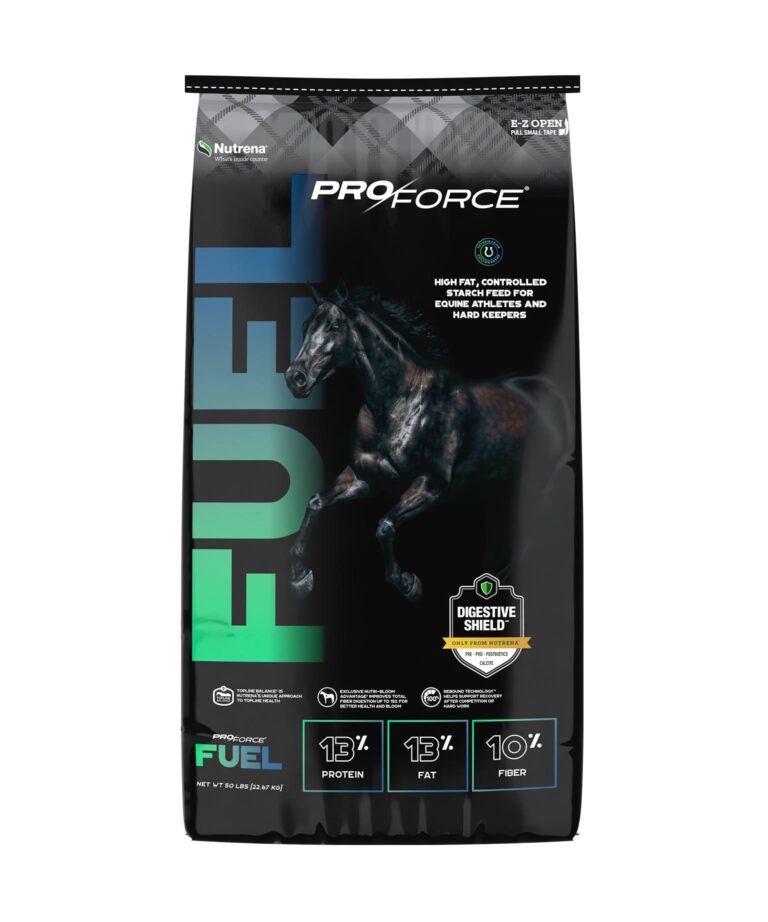 ProForce
ProForce
Fuel
13.0% Crude Protein10.0% Max Crude Fiber13.0% Crude FatHigh fat, controlled starch feed for equine athletes and hard-keepersLearn More -
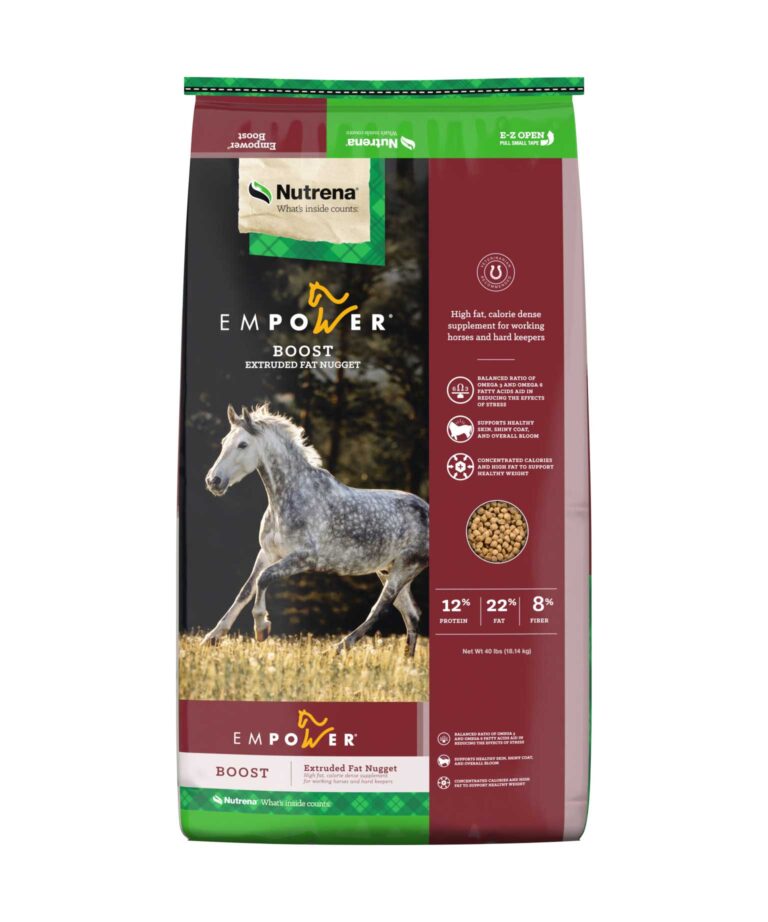 Empower
Empower
Boost
12.0% Crude Protein8.0% Max Crude Fiber22.0% Crude FatHigh fat, calorie dense supplement for working horses and hard keepersLearn More -
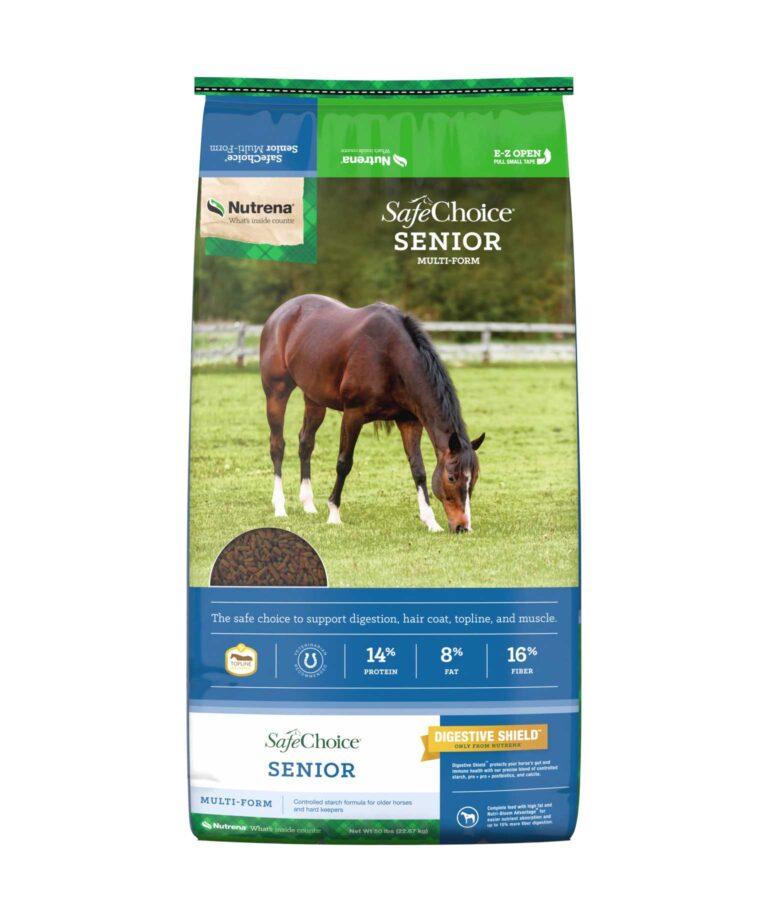 SafeChoice
SafeChoice
Senior
14.0% Crude Protein16.0% Max Crude Fiber8.0% Crude FatHigh fat and controlled starch formula designed for the unique needs of performance horses, hard keepers and older horses – now with Digestive Shield™Learn More
Get a FREE Consultation
Fill out our Contact Us form for an equine nutrition expert to provide 1-on-1 recommendations for your feeding program.
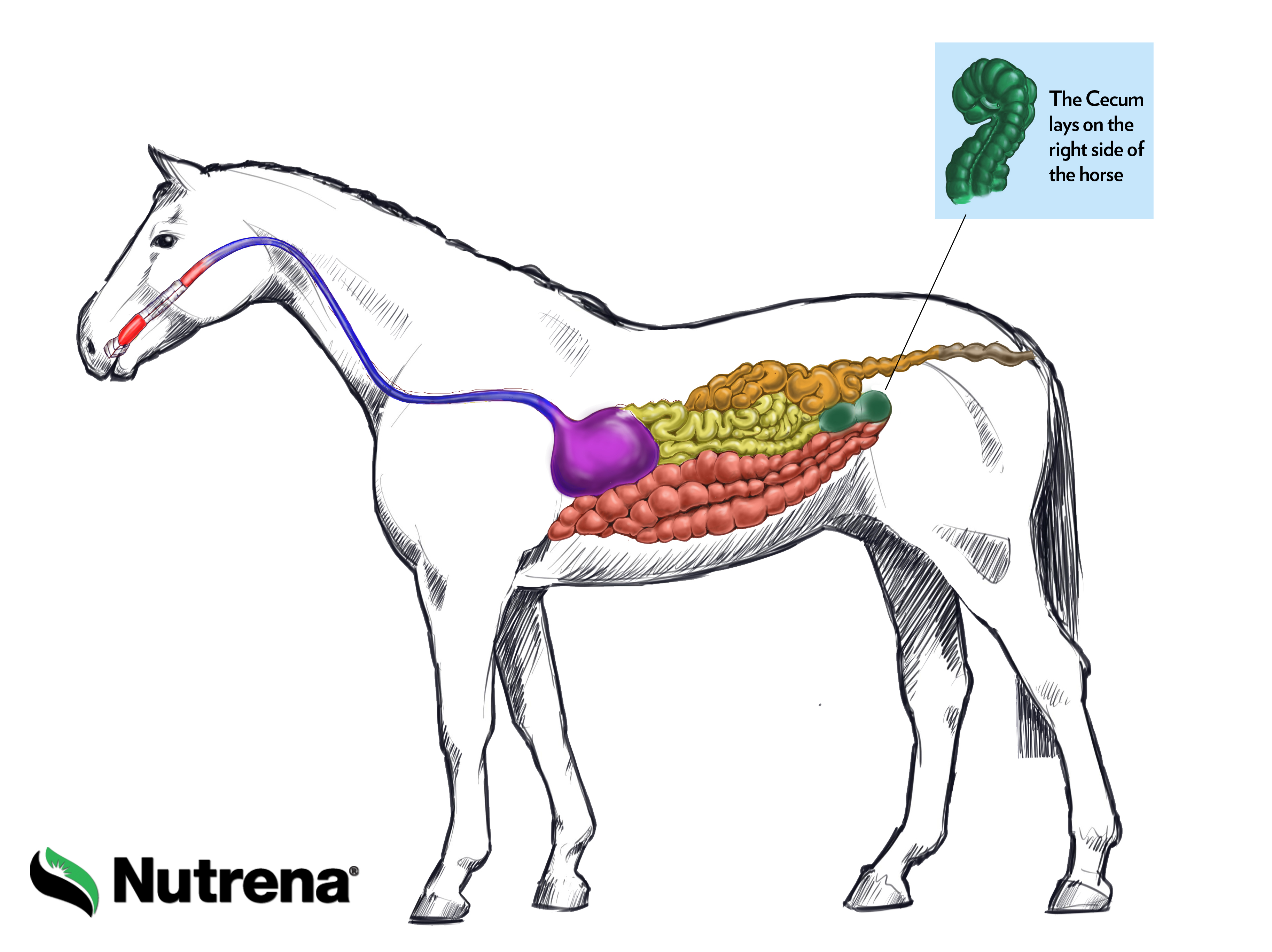
Nutri-Bloom Advantage®
Only from Nutrena
What if something in the feed formula could help a horse better digest the hay, pasture, and feed they eat? Nutri-Bloom Advantage, a proprietary digestive health blend built into *SafeChoice® Feed and ProForce® Senior, can help overcome some of these obstacles. By improving the horse’s digestive efficiency, more calories can be extracted from the less-than-ideal hay. In fact, in a research study, horses who consumed diets fortified with Nutri-Bloom Advantage® demonstrated up to 15% improvement in apparent fiber digestibility from their hay and feed concentrate rations.

Digestive Shield™
Only from Nutrena
Digestive Shield™ is a new technology, exclusive to the Nutrena® brand, that supports gut health from end-to-end with a unique combination of controlled starch, calcite and pre + pro + postbiotics. Digestive Shield™ is one more way Nutrena® continues to work to promote the health and well-being of horses. Unlike some other horse feed, Nutrena ProForce and Nutrena SafeChoice guarantees pre + pro + postbiotics on our feed tags, so you can support your horse’s immune system and gut health, maintain microbiome and stomach pH, balance digestive system, digestive tract, overall health and performance.
Related Topics
-
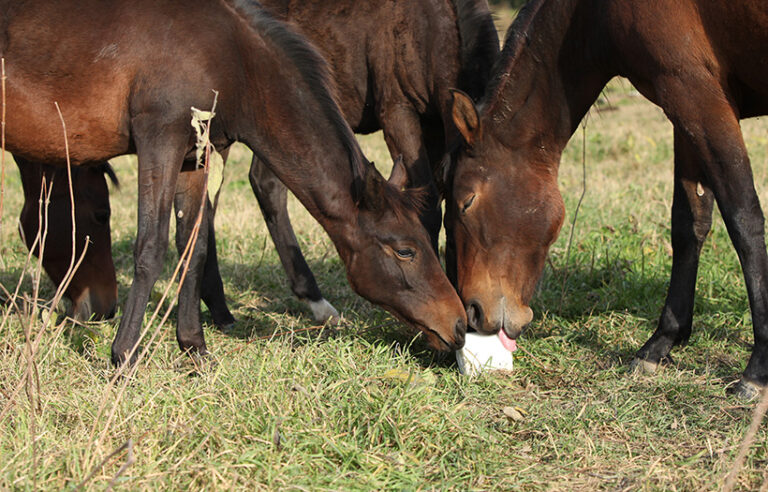
Nutrient Deficiencies in Horse Feed Diets
Horses, like all animals, have a range of nutrient requirements to meet their daily needs. Learn what might be missing from your horse’s diet.
View Blog -
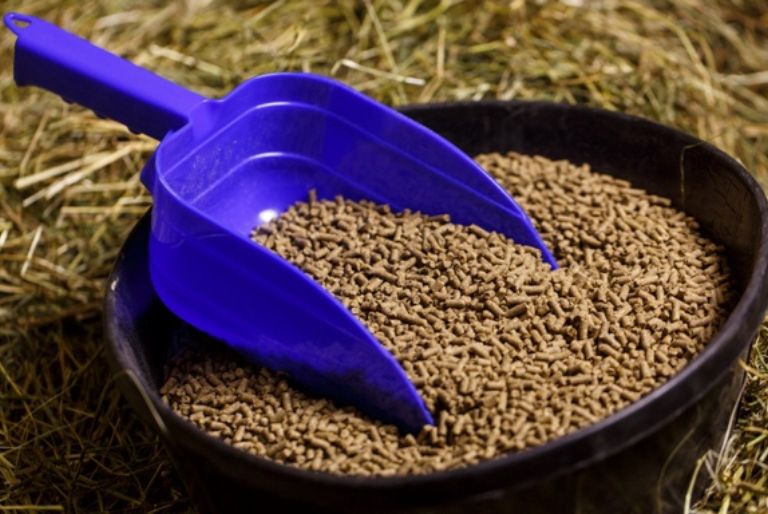
Rehabilitating a Neglected Horse: A Caregiver’s Guide
If you have made the decision to rehabilitate a neglected horse, we have compiled some important steps and considerations to help you.
View Blog -
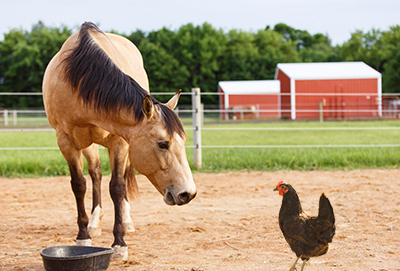
Horse Feed With High Fat Content
Adding fat to the diet was beneficial for gaining weight and improving hair coat. Learn the ideal total dietary intake or ratio of Omega-6 and Omega-3 fatty acids for horses.
View Blog -

Feeding Horses that Are Hard Keepers
So, what is the best way to feed a horse to increase weight gain to the desired level, and then maintain it there?
View Blog

